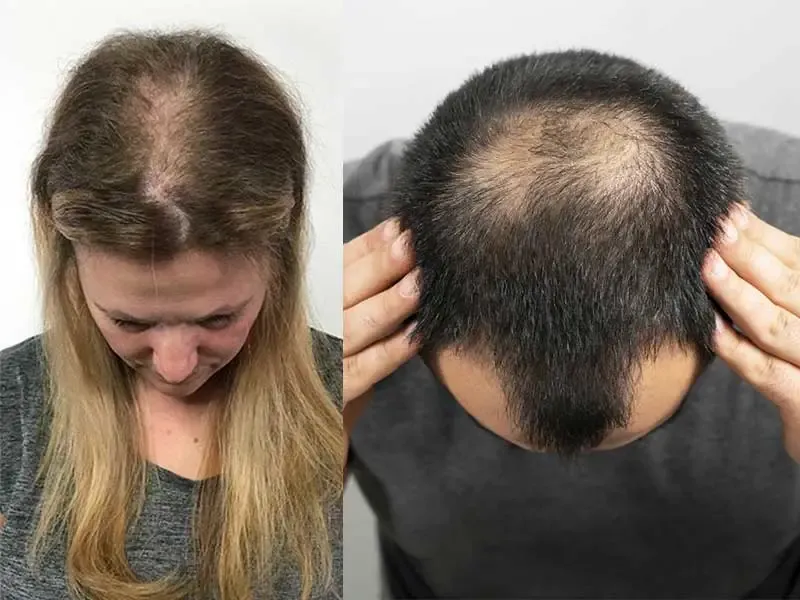Tired of waking up to new pimples every other day? You wash your face, eat right (mostly), and still—they come back. Painful, red, and right where everyone can see them. It’s frustrating, and sometimes it feels like nothing works.
That’s why so many people are switching to acne removal home remedies. These natural fixes are simple, safe, and actually work without burning your skin or costing a fortune. Whether you want fast results or long-term clear skin, there’s a home remedy for pimples that can help.
In this blog, you’ll find 10 easy, science-backed ways to remove pimples naturally—some that work overnight, and others that keep your skin clean for good. So if you’ve been wondering how to remove pimples naturally and permanently, start here.
10 Effective Home Remedies for Pimples
1. Tea Tree Oil
You know that feeling when a pimple shows up right before something important? It’s like your face turns into a battlefield overnight. It hurts, looks bad, and shows up when you least expect it. That’s why so many people turn to tea tree oil—a gentle, natural oil that fights acne without making your skin worse.
It’s known for killing the bacteria that cause pimples and calming red, swollen skin.
Benefits:
- Fights (1) acne-causing bacteria
- Reduces redness and swelling
- Helps dry out pimples overnight
How to use it:
- Mix 1 drop of tea tree oil with 2–3 drops of water or aloe vera
- Dab it on the pimple with a cotton swab
- Use once or twice a day
2. Apple Cider Vinegar
When your face suddenly breaks out, you might feel helpless—like no matter what you try, nothing works. That’s where apple cider vinegar (ACV) can be a game-changer. It’s something many people already have in their kitchen, and it can help dry out pimples fast.
ACV (2) has natural acids that fight bacteria and help clear dead skin cells. It works like a gentle toner to keep pores clean.
Benefits:
- Fights pimple-causing bacteria
- Removes excess oil and dead skin
- Helps fade marks over time
How to use it:
- Mix 1 part ACV with 3 parts water
- Dip a cotton ball and apply it to pimples
- Let it sit for 5–10 seconds, then rinse
- Use once a day
You can go for Anti-Acne Peel for active acne
3. Argan Oil
If your skin feels dry and oily at the same time, it can be hard to know what to do. You don’t want to clog your pores—but skipping moisturizer makes things worse. That’s where argan oil helps. It’s light, non-greasy, and actually helps balance your skin.
Argan oil (3) is full of vitamin E and healthy fats. It helps reduce inflammation and keeps your skin soft without causing breakouts.
Benefits:
- Moisturizes without clogging pores
- Calms redness and swelling
- Helps skin heal faster from pimples
How to use it:
- Put 2–3 drops of argan oil on clean fingertips
- Gently massage into your skin, especially dry or irritated areas
- Use once or twice a day
4. Jojoba Oil
Some pimples happen because your skin makes too much oil. But drying it out too much can make it worse. That’s where jojoba oil comes in—it tells your skin to stop overproducing oil.
Jojoba oil (4) is very close to the natural oil your skin makes. It helps keep your skin balanced, calm, and clear. Many people use it daily to reduce breakouts and get smoother skin.
Benefits:
- Balances oil production
- Soothes irritated or inflamed skin
- Helps prevent clogged pores
How to use it:
- Take 2–3 drops of jojoba oil
- Gently massage into clean skin, especially oily areas
- Use daily after washing your face
5. Aloe Vera
Pimples can hurt—not just your skin, but your confidence too. When your face feels hot, red, or sore, aloe vera brings instant relief. It is cool, soothing, and gentle enough for even the most sensitive skin.
Aloe vera (5) is packed with vitamins and natural healing agents. It helps reduce swelling, fights bacteria, and speeds up skin repair. It is one of the easiest and safest acne removal home remedies.
Benefits:
- Soothes redness and irritation
- Helps heal pimples faster
- Keeps skin calm and hydrated
How to use it:
- Cut a fresh aloe leaf and scoop out the gel
- Apply a thin layer to clean skin
- Leave it on overnight or wash off after 20 minutes
- Use once or twice daily
6. Honey
Pimples can make you want to hide your face—but nature has its own sweet solution. Honey is not just for tea or toast. It is a natural healer that’s been used for skin problems for centuries.
Honey is packed with antibacterial properties that help fight the germs that cause pimples. It also keeps your skin soft and helps speed up healing. When nothing feels safe to put on your face, honey usually is.
Benefits:
- Kills acne-causing bacteria
- Speeds up skin healing
- Prevents scars and soothes skin
How to use it:
- Use raw or manuka honey
- Dab a small amount directly on the pimple
- Leave it for 20–30 minutes, then rinse
- Use once or twice daily
7. Zinc
If you’ve tried everything and your pimples still keep coming back, your body might be missing something—like zinc. This tiny mineral plays a big role in skin health and healing.
When your body doesn’t have enough zinc, it can lead to more breakouts. Taking zinc or using it on your skin can help control oil, fight bacteria, and calm redness. It is one of the most studied and trusted natural treatments for acne.
Benefits:
- Reduces (6) oil production
- Fights acne-causing bacteria
- Helps skin heal faster and reduce scarring
How to use it:
- Take zinc supplements (consult a doctor first)
- Or use a zinc-based cream on pimples
- Use once daily for best results
8. Green Tea
Some days, your skin just feels tired, oily, and inflamed. That’s when green tea can help—not just as a drink, but right on your skin. It is packed with antioxidants that help fight breakouts from the inside and out.
Green tea helps reduce swelling and fights the bacteria that cause pimples. It also controls oil and keeps your skin fresh and clean. It is gentle, natural, and perfect for daily use.
Benefits:
- Fights acne-causing bacteria and inflammation
- Reduces oil production
- Rich in antioxidants that help repair skin
How to use it:
- Brew green tea and let it cool
- Use a cotton ball to apply it to your face
- Leave it on for 10–15 minutes, then rinse
- Use once a day
9. Rosemary
When your skin feels angry—red, swollen, and painful—rosemary can bring calm. This powerful herb is not just for cooking. It has natural oils that fight germs and reduce puffiness, making it a quiet hero for acne-prone skin.
Rosemary is known for its anti-inflammatory and antibacterial powers. It helps dry out pimples, clear up clogged pores, and keep your skin looking fresh.
Benefits:
- Reduces swelling and redness
- Kills acne-causing bacteria
- Helps clear clogged pores
How to use it:
- Steep fresh rosemary leaves in hot water
- Let it cool and apply to the skin with a cotton pad
- Leave on for 10–15 minutes, then rinse
- Use once a day
10. Coconut Oil
If your skin feels dry, irritated, or tight after a breakout, coconut oil can feel like relief in a jar. It is rich, smooth, and deeply healing—but only for the right skin type.
Coconut oil has strong antibacterial and anti-inflammatory properties. It helps fight acne-causing bacteria and keeps your skin soft and protected. However, it is best for people with dry or normal skin—not oily or very acne-prone skin.
Benefits:
- Moisturizes and heals dry, damaged skin
- Fights bacteria that cause pimples
- Helps fade acne scars over time
How to use it:
- Use a small amount of virgin coconut oil
- Rub gently onto clean, dry skin
- Leave on overnight and rinse in the morning
- Use 2–3 times a week
Conclusion
Dealing with pimples can feel like a never-ending battle. You try new products, change your routine, and still—they come back. But sometimes, the best answers are the simplest ones. These home remedies for pimples are gentle, natural, and trusted by many people around the world.
Whether you want to remove pimples overnight at home naturally or stop breakouts in the long run, these 10 remedies can help. They are easy to use, kind to your skin, and don’t require expensive products or harsh chemicals.
The key is to stay consistent. Pick one remedy that suits your skin and give it time to work. Clearer skin is possible, and you can get there with patience and the right care.
References:
1. Cited: Nascimento T, Gomes D, Simões R, da Graça Miguel M. Tea Tree Oil: Properties and the Therapeutic Approach to Acne-A Review. Antioxidants (Basel). 2023 Jun 12;12(6):1264. doi: 10.3390/antiox12061264. PMID: 37371994; PMCID: PMC10295805.
Link: https://pmc.ncbi.nlm.nih.gov/articles/PMC10295805/
2. Cited: Elhage KG, St Claire K, Daveluy S. Acetic acid and the skin: a review of vinegar in dermatology. Int J Dermatol. 2022 Jul;61(7):804-811. doi: 10.1111/ijd.15804. Epub 2021 Aug 5. PMID: 34350993.
Link: https://pubmed.ncbi.nlm.nih.gov/34350993/
3. https://www.webmd.com/diet/health-benefits-argan-oil
4. Cited: Gad HA, Roberts A, Hamzi SH, Gad HA, Touiss I, Altyar AE, Kensara OA, Ashour ML. Jojoba Oil: An Updated Comprehensive Review on Chemistry, Pharmaceutical Uses, and Toxicity. Polymers (Basel). 2021 May 24;13(11):1711. doi: 10.3390/polym13111711. PMID: 34073772; PMCID: PMC8197201.
Link: https://pmc.ncbi.nlm.nih.gov/articles/PMC8197201/
5. Cited: Hekmatpou D, Mehrabi F, Rahzani K, Aminiyan A. The Effect of Aloe Vera Clinical Trials on Prevention and Healing of Skin Wound: A Systematic Review. Iran J Med Sci. 2019 Jan;44(1):1-9. PMID: 30666070; PMCID: PMC6330525.
Link: https://pmc.ncbi.nlm.nih.gov/articles/PMC6330525/
6. Cited: Brandt S. The clinical effects of zinc as a topical or oral agent on the clinical response and pathophysiologic mechanisms of acne: a systematic review of the literature. J Drugs Dermatol. 2013 May;12(5):542-5. PMID: 23652948.
Link: https://pubmed.ncbi.nlm.nih.gov/23652948/




